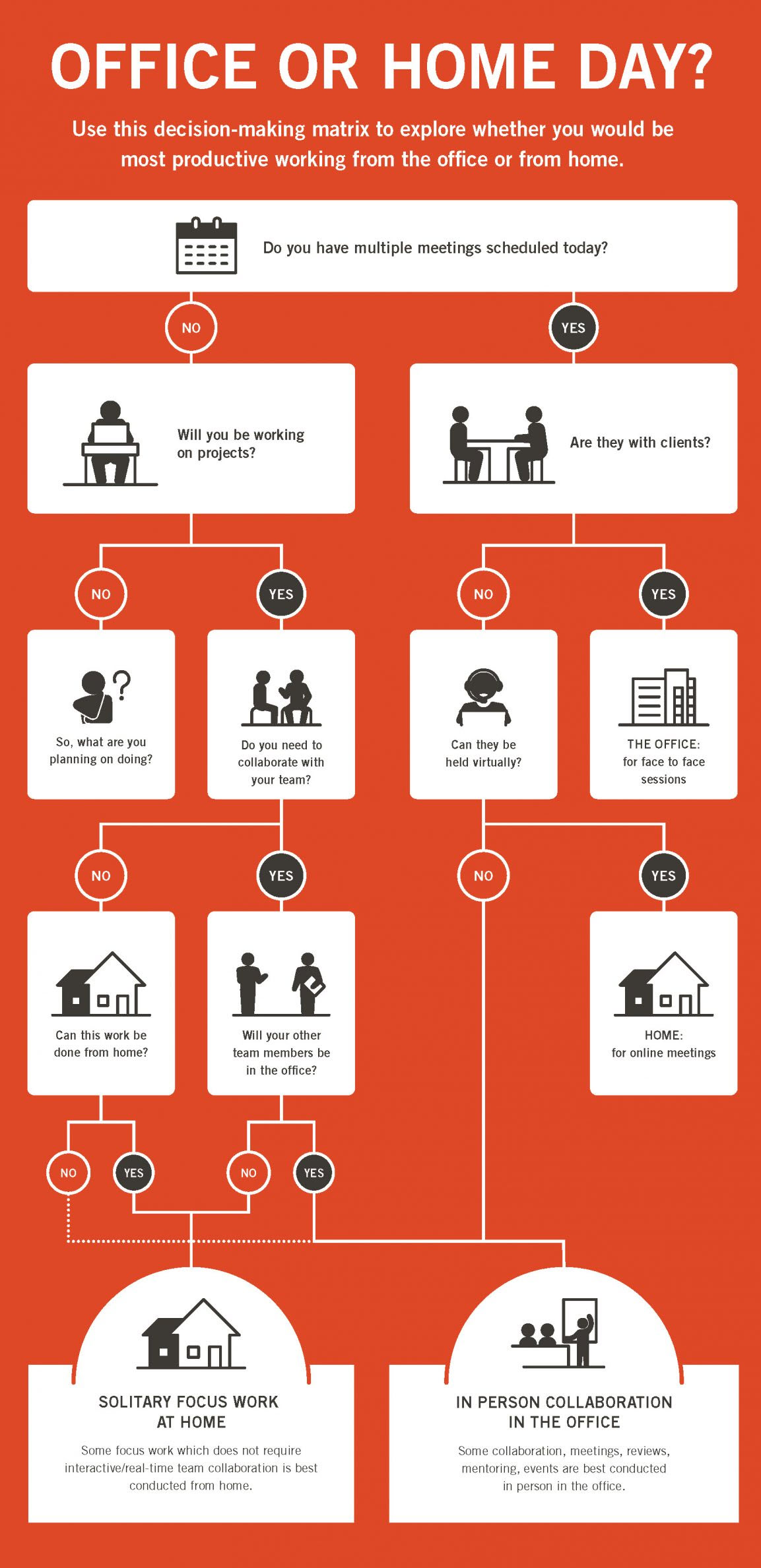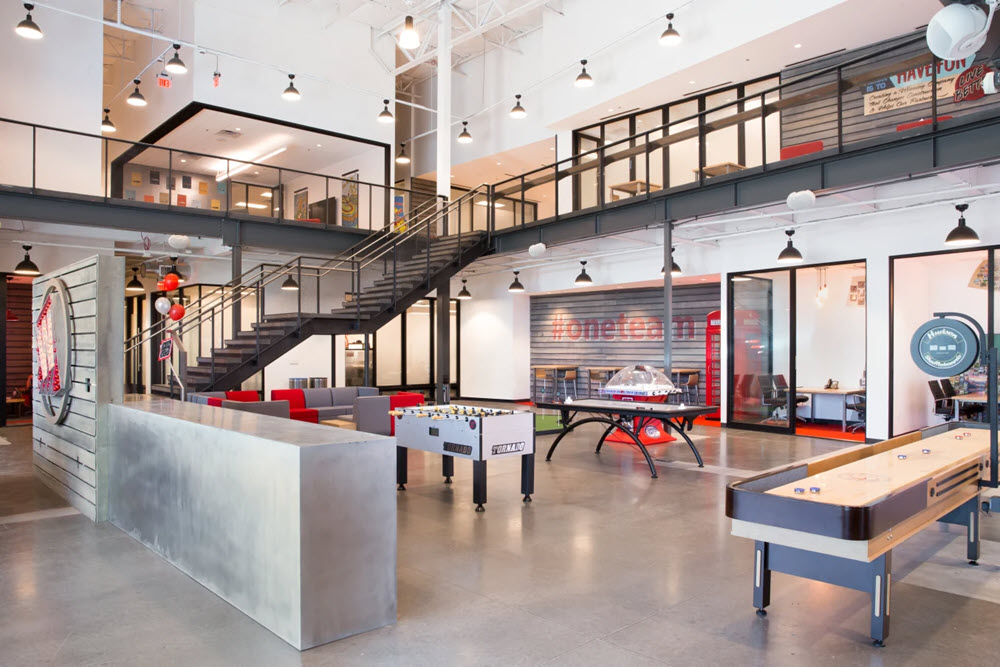There is one certainty in all this COVID-19 ambiguity: the date of your lease expiration.
ork was historically a place you went, but now is synonymous with what you do. Working from home has been the reality for 100 million Americans during the COVID-19 crisis. Whether part of the contingent soon returning to the office in phases, not returning until next year, or potentially never returning, the pandemic has accelerated the conversation about remote work, lease expiration, and the demand for office space.
Maximize the Opportunity
Commercial office lease terms are typically 3-5 years. Organizations begin planning at least a year before the lease expiration to formulate requirements, search locations, explore options, negotiate, design and build the office space before move in. The typical real estate decision process centers around 5 main factors:
- Location
- Quality of building
- Amount of space required
- Lease term
- Tenant improvement allowance
COVID-19 has up-ended the “amount of space” question, requiring a reexamination of what will be needed for the future office. But how to decide on the right office space for your organization?
The pandemic and the massive work from home experiment have presented a unique opportunity for transformation and reinvention of the workplace ecosystem. Alternative workplace strategies such as a remote workforce, decentralization of locations, unconventional seating/scheduling schemes that just six months ago would have been unheard of, are now under consideration.
It is tempting to take the path of least resistance and simply renew at your current office location, give back some square footage and show an incremental bottom line real estate savings. But this myopic emphasis on cost is a false economy missing a bigger play: to re-consider the employee experience, embrace new ways of working and in the process reduce the office footprint. We wanted to explore the relationships between people, places, and the spaces they work in, to offer support for lease expiration decisions.

Interplay Between Culture & the Office
Culture represents the characteristics and personality of an organization. It embodies the values, traditions, policies and attitudes of a company. But a change in the office, doesn’t necessarily mean a change in deep cultural beliefs. Culture is as much a mindset as a place. Entrepreneurial cultures transformed from the garage to the office, developing and evolving with the organization. Cultures centered on agility, equity, transparency, collaboration and choice support employees whether working from home or the office.
Build a balanced culture integrating in-person and virtual work. Explore how employees get work done and how they think about work in the organization. Learn from the working at home experiment to assess how the company’s culture is being tested and transformed.

A Businesses’ Most Valuable Asset
Shift the conversation from about the space to about the people. The 3-30-300 rule which states that people cost 10 times more than space is more appropriate than ever in the context of COVID-19 office space decisions.
Research reveals that people prefer working from home, not only in pandemic times. A recent IFMA survey indicated that 76 percent of the global participants wanted to continue to work from home two days per week on average and 16 percent do not want to return at all. For the 3 or so days per week that most people will eventually be in the office, they are seeking diverse experiences, such as collaborating, innovating, and staying informed. Institutional knowledge, career development and relationship building are more reasons to be in the physical workplace.
So, who should work from home and what are the implications? How much work from home makes sense for the individual, their role, the team, and the organization? Capturing data from the remote workforce will guide the conversation. Questions to build a Work from Home profile are often categorized around these areas:
Wellbeing – Does the employee have a suitable, ergonomic home workspace? What other stressors or life circumstances are impacting an employees’ work capabilities?
Safety – How does the employee commute to the office? What PPE will be integrated into the office experience? What is the employee’s readiness perception for continued work from home or return to the office?
Productivity – Does the employee have access to tools, technology and connectivity from their home? Is their role’s tasks and processes well-defined? Does their role require highly interdependent work for success? Is the work getting done during the initial work from home orders? What is the importance, suitability and time spent for each major work activity?
Recent studies of employees working from home indicate that more experienced employees report feeling more accomplished at the end of their day. Less tenured employees report being less productive, requiring more direction, are less aware of what is expected of them and often have less dedicated space at home to work. They thrive with mentoring and team support provided by the office.

Location, Location, Location…Place
The criteria for a company’s location are undergoing a makeover, starting with the purpose of the office, size, transportation connections and amenities. Urban center offices can be reimagined into gathering spaces where employees schedule team and collaboration times 1-2 days per week. The hub-and-spoke model moves offices closer to where the workforce lives and reduces the expensive city center space to customer engagement spaces. The flexibility of coworking lease terms may satisfy other organization’s needs for speed of space delivery. These less centralized offices align with widely distributed teams.
Competitive Advantage…Space
The physical office, pre-COVID, reflected an organization’s brand and culture; provided employee experiences for connectivity and innovation; and served as an attraction and retention magnet for the best talent. The post-COVID office must prove its reason for being, specific to each organization’s requirements.
There are few scenarios where companies plan to bring their entire workforce back to the office space. What physical attributes will characterize the future office space once the immediate pandemic concerns have been dissipated?
Office space planning considerations in the post-COVID landscape include decreased densities, increased circulation and compartmentalization of space – that is easily expanded or divisible in the future. The building’s commitment to preparedness will incorporate every aspect of the employee’s journey from their parking spot to their desk.
- Gesture based entry and elevators with smartphone access will replace badges with near field communications.
- Touchless restrooms with toilet contamination dispersion will be demanded.
- Increased daytime cleaning of tenant and shared space will be visible and documented.
- Increased interior air quality standards, smart lighting, and occupancy sensors that were previously considered more difficult (read costly) to retrofit into older buildings will now be included in capital project planning.
The significant landlord investment in shared amenities can be a positive factor for tenants who may be decreasing their leased space but still requiring larger collaboration spaces or individual focus zones. Other building attributes such as outdoor spaces for work and leisure, health and wellness programming and pop-up amenities to meet situational demand will play into tenant’s space considerations.
Home is now a full-fledged member in the ecosystem of work locations, joining the office and other third places, like co-working spaces and cafes. There is increasing attention on the home office design. All the attention paid to physical attributes in the office, such as ergonomics, lighting and technology are moving home. The furniture industry is re-tooling products and services to support this new demand.
Start Now
In the case of a lease expiration in the next year, take advantage of this opportunity to explore new alternatives. Even if your organization does not have the data yet, consider that a Fortune magazine survey of 500 CEOs estimate 25 percent of their workforce will not be returning to the office.. Use that benchmark to reassess your employee roles and workplace standards. Reexamine the office location. Redefine your office and home workspaces. A hybrid office/home work model could foster a more resilient workforce for your organization.
ABOUT US
At InteriorLOGIC, we build work environments. From our home office in Madison, WI our award-winning commercial interior design team focuses on creating spaces that work. We continually work to improve the end user experience with each design and our team is well-suited for challenging projects including LEED certification and sustainability projects. For more information about our business and approach, please visit www.intlogic.com.




